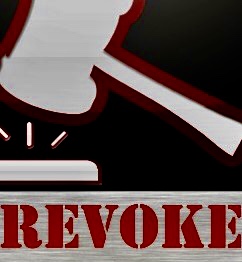
1. Feeney’s The Canadian Law of Wills, 4th ed. (Markham: LexisNexis, 2000) at 8.17 states:
An executor has a duty to settle the affairs of the estate and to distribute in accordance with the terms of the Will. A power granted to an executor exists within the context of the executor’s duty to settle the affairs of the estate and to distribute.
2. A power to retain an asset does not override the executor’s duty to settle the affairs of the estate and to distribute, per Justice Middleton in Sievert, Re (1921), 67 D.L.R. 199 (Ont. C.A.) at p. 200.
3. In Ketcham v. Walton 2012 BCSC 175 at para. 10, Mr. Justice Wong stated: “The basic principle of an executor’s duty to specified potential beneficiaries of the will is neutrality.” He quoted Mr. Justice Bouck in Quirico v. Pepper Estate (1999) 22 BCTC 82 (BCSC) at para. 15, as follows:
The primary duty of an executor is to preserve the assets of the estate, pay the debts and distribute the balance to the beneficiaries entitled under the will, or in accordance with any other order made under the Wills Variation Act. An executor should not pick sides between the beneficiaries and use estate funds to finance litigation on their behalf under the Wills Variation Act. It is a matter of indifference to the executor as to how the estate should be divided. He or she need only comply with the terms of the will or any variation of it made by a court.
4. The statutory authority to remove a trustee and appoint a replacement for that trustee is set out in ss. 30 and 31 of the Trustee Act, R.S.B.C. 1996, c. 464:
30. A trustee or receiver appointed by any court may be removed and a trustee, trustees or receiver substituted in place of him or her, at any time on application to the court by any trust beneficiary who is not under legal disability, with the consent and approval of a majority in interest and number of the trust beneficiaries who are also not under legal disability.
31. If it is expedient to appoint a new trustee and it is found inexpedient, difficult or impractical to do so without the assistance of the court, it is lawful for the court to make an order appointing a new trustee or trustees, whether there is an existing trustee or not at the time of making the order, and either in substitution for, or in addition to any existing trustees.
5. In Miles v. Vince, 2014 BCCA 289 at paras. 84-85, Madam Justice Levine, for the Court, considered the bases upon which a court might remove a trustee, as follows:
[84] What circumstances justify the removal of a trustee? In Letterstedt v. Broers (1884), L.R. App. Cas. 371 (J.C.P.C.), the court established guidelines justifying the removal of a trustee (at 385-389):
“1. If the Court is satisfied that the continuance of the trustee would prevent the trusts being properly executed, the trustee might be removed. It must always be borne in mind that trustees exist for the benefit of those to whom the creator of the trust has given the trust estate.
2. The acts or omissions must be such as to endanger the trust property or to show a want of honesty, or a want of proper capacity to execute the duties, or a want of reasonable fidelity.
3. In exercising the delicate jurisdiction of removing trustees, the Court’s main guide must be the welfare of the beneficiaries. It is not possible to lay down any more definite rule in a matter that is so “essentially dependent on details often of great nicety.” The Court must proceed to look carefully into the circumstances of the case.
4. Where a trustee is asked to resign, and if it appears clear that the continuance of the trustee would be detrimental to the execution of the trusts, even if for no other reason than that human infirmity would prevent those beneficially interested, or those who act for them, from working in harmony with the trustee, and if there is no reason to the contrary from the intentions of the framer of the trust to give this trustee a benefit or otherwise, the trustee is always advised by his own counsel to resign.”
6. In deciding whether to remove an estate trustee, “the court’s main guide should be the welfare of the beneficiaries”: see Crawford v. Jardine, [1997] O.J. No. 5041 (Ont. Ct. (Gen. Div.)), citing Letterstedt v. Broers, ibid, at 385-387, and Anderson, Re, (1928), 35 O.W.N. 7 at 8 (Ont. H.C.).
7. A court may intervene by removing a trustee where it finds that the conduct of the named trustees has endangered the trust property, or has shown a want of honesty, or of proper capacity to execute the duties of the office, or of reasonable fidelity (Conroy v. Stokes, [1952] 4 D.L.R. 124).
8. An executor may be removed where the executor’s actions are not in the best interests of the beneficiaries (McKay v. Howlett et at, 2003 BCCA 555).
9. An executor may be removed where the executor’s duties are found to be in conflict with his or her personal interests or estate assets had been endangered by the executor’s conduct and the executor had benefitted at the expense of the estate (Hall v. Hall, (1983) 45 B.C.L.R. 154 (S.C.); Veitch Estate, 2007 BCSC 952).
10. Even in the absence of misconduct, a trustee may be removed by the Court where the proper administration of a trust is threatened, and where the trustee in question has shown a want of proper capacity to execute the duties. (Re: Consiglio Trusts (No. 1) [1973] 3 O.R. 326; Letterstedt v. Broers, ibid; Conroy v. Stokes, ibid).
11. The principles to be applied in applications for the removal of executors are the same as for those for removal of trustees. (Powers v. Powers Estate, [1988] N.J. No. 19 (S.C.N.T.D.)).
12. A trustee may be removed if he or she fails to communicate promptly with trust beneficiaries or fails to file trust tax returns (Loftus v. Clarke Estate, 2001 BCSC 1136); or if there is a concern that the trustee has not made a proper accounting of business that he or she had conducted on behalf of the trust or evidence that he or she was treating the assets of the trust as his or her own personal assets (Hayne v. Moncrieff, 2012 ABCA 264).
13. In matters involving an executor’s misconduct the beneficiary may obtain an award of special costs against him or her (Loftus v, Clarke Estate, ibid).
14. “Even a ‘perceived’ conflict of interest between an executor’s personal interests and her duty to act in the interests of the beneficiaries of the will can be sufficient to warrant her removal.” Yeh Estate (Re), 2016 BCSC 1550 at para. 17, quoting Ching Estate (Re), 2016 BCSC 1111, at para. 22.
15. In Re Becker (1986), 1986 CanLII 2596 (ON SC), 57 O.R. (2d) 495 (Ont. S.C.), (sub nom. Stadelmier v. Hoffman), the Court found the executor should be passed over because there was a conflict as a result of the fact the executor could not attack the gift and transfer of properties to him while at the same time maintaining in his personal capacity that the transfers were proper. The court summarized the findings at 500:
In considering the fitness of the respondent to act as an executor I have considered also the duties of an executor in a general way. One duty of an executor is to bring in the estate for distribution among the beneficiaries. If it is perceived, on good grounds, that that important duty is compromised by a personal conflict of interest because the executor will be asked to sue himself to recover what may be a large part of the estate property, he must be passed over. That consideration is particularly important when the action against the executor is for a very significant amount in respect to the size of the estate.




